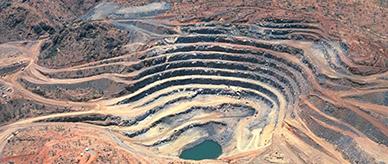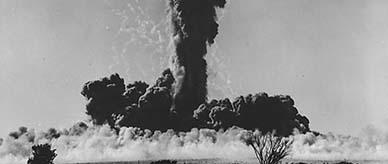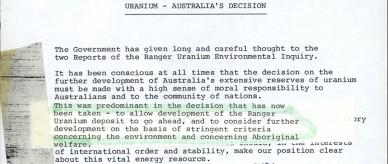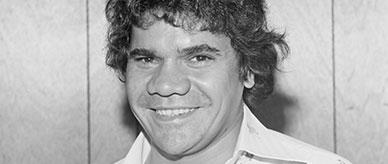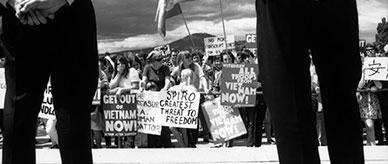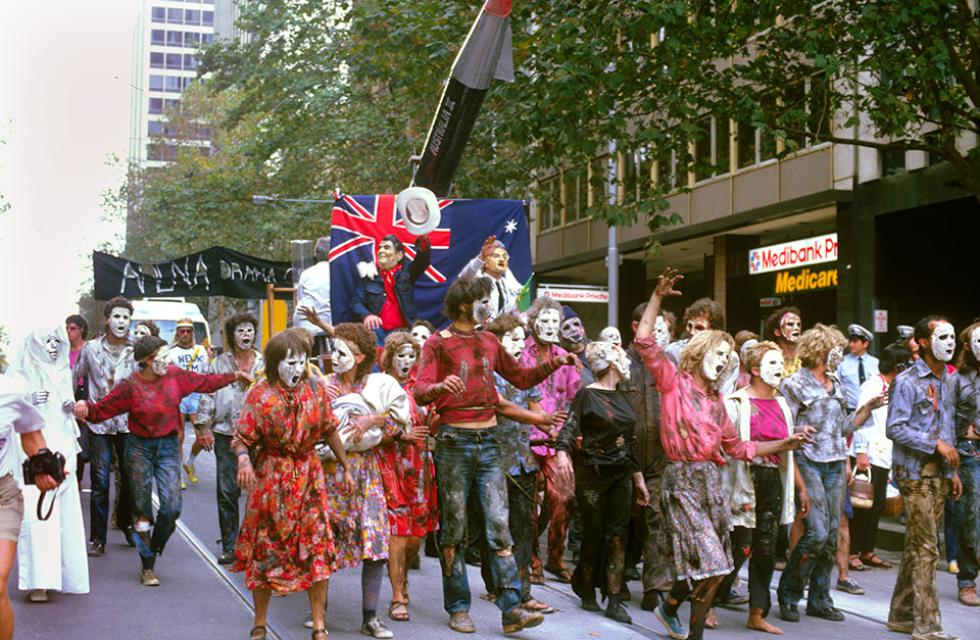


This record is a photo taken during an anti-nuclear rally in 1984. It shows a group of protestors marching down a street in Melbourne wearing white masks and torn clothes.
Governments around the world have funded the development and testing of nuclear weapons. These weapons, including atomic bombs, cause death and destruction on a devastating scale when used. Harmful radiation is also emitted into the environment for tens of thousands of years after the initial explosion, causing ongoing environmental contamination and health issues for survivors and their families.
In 1945, towards the end of the Second World War, atomic bombs were detonated over the Japanese cities of Hiroshima and Nagasaki, killing over 200,000 people. Nuclear weapons have not been used in active warfare since then, but thousands remain in the world today. Nuclear weapons have also been tested by a number of governments, including Australia.
In 1950, the UK prime minister Clement Attlee asked the Australian government to conduct a series of nuclear tests in Australia. Between 1952 and 1963 nuclear testing occurred at the Monte Bello Islands off the coast of Western Australia and Emu Field and Maralinga in South Australia.
In the years after the nuclear testing, reports increased about chronic illness and birth defects among the people who had been living near the testing sites. Some of these people were Aboriginal Australians who had reportedly been 'removed and decontaminated'’' after their exposure to the testing sites.
Many people and organisations around the world – including the United Nations – believe that nuclear disarmament is the best way to protect against the dangers of nuclear weapons. Nuclear disarmament is the process of reducing and eventually eliminating the world's supply of nuclear weapons.
In 1984, when this photo was taken, Australia was involved in mining uranium and developing nuclear weapons. Reports of illnesses related to the testing of nuclear weapons were also becoming well known. This sparked anger and fear among members of the Australian public, and lead to large protests for nuclear disarmament in city centres around Australia. Some protests saw up to 80,000 people attend.
This photo shows one of those protests, demonstrating some of the ways that Australians have chosen to make their voices and opinions heard by the federal government.
Related records
Related themes
Need help with your research?
Learn how to interpret primary sources, use our collection and more.

